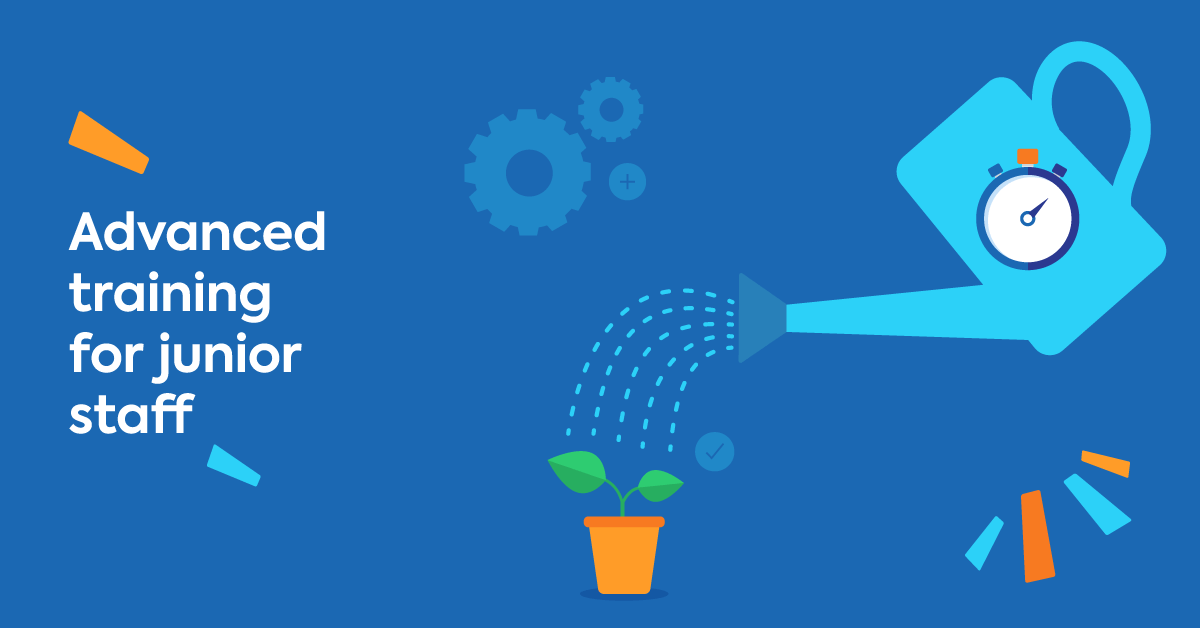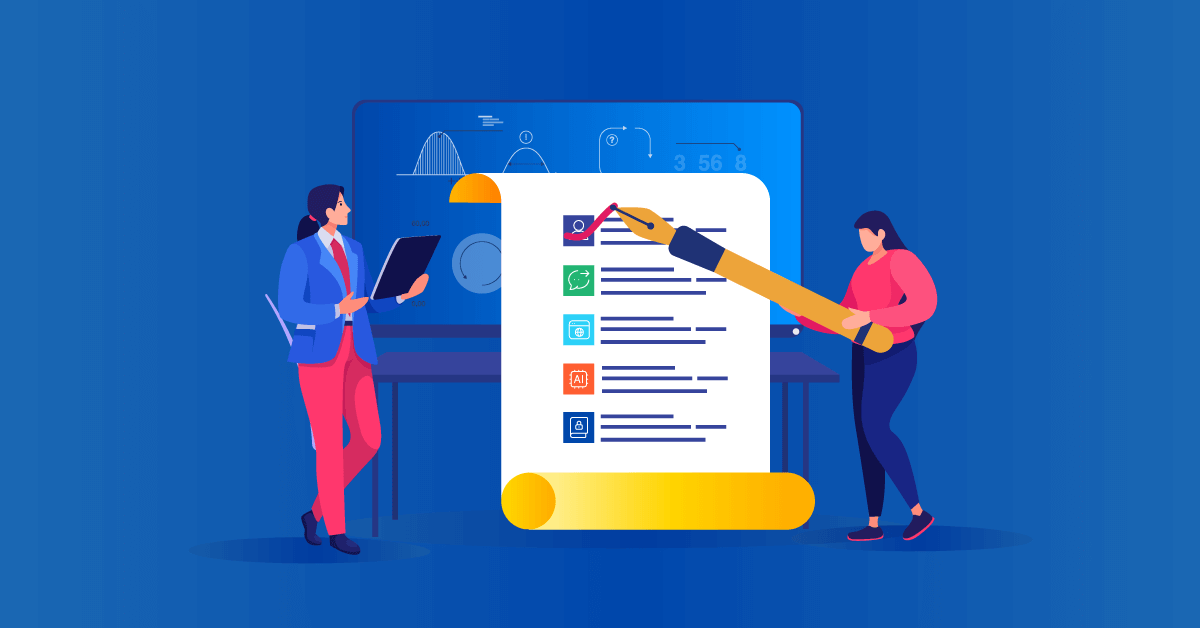This year, thousands of new workers will enter the workforce—many fresh out of school and ready to start their careers. If you’ve studied up on working with employees from younger generations, you know they value learning and development. And if entry-level training isn’t a part of your organization’s training strategy, you’re missing a big opportunity.
Everyone in your organization benefits from training, including employees just starting out. And when you offer training and development opportunities to junior hires, you’re investing in your own company’s growth. The key is to understand what kind of training to offer at this stage of an employee’s career and the best ways to deliver it.
Do we really need to train entry-level employees?
“Hold on,” you might be thinking. ”These employees are just out of school. Their learning is up to date and they’re not going to be interested in training right now.”
Or, maybe you’re wondering what kind of training they might need, given the relatively simple or general tasks you give to newbies. Don’t entry-level employees generally come in with the requisite entry-level skills?
And what about costs? Training can be expensive. What if you invest in training new hires only to have them leave and take their new skills elsewhere?
The truth is, training is more than providing niche skills to specialists. Instituting an entry-level training program is a good way to boost productivity and engagement, reduce turnover, and set your company up for growth. Here’s why.
Why you should train entry-level employees
The above concerns are rooted in sound reasoning. When you’re thinking purely about technical skills or know-how, it may be difficult to understand what kind of training would be of value (or interest) to recent hires. And, of course, cost is a big factor. It’s not always easy to see tangible or quantifiable benefits of training.
But as stated earlier, new hires do expect training on the job. The important thing is to offer content that’s meaningful to them now.
Training doesn’t just mean showing someone how to do something. It’s about preparing people to thrive in the workplace and equipping them with new skills that will help them grow.
Deliver online training in just a few clicks with TalentLMS
The training platform that users consistently rank #1.
Easy to set up, easy to use, easy to customize.
And when it comes to costs, consider the following benefits of training from the bottom up:
- Reduced turnover. When you provide employees with development opportunities, no matter what stage of their careers they’re in, they’ll see that you care about their futures. Employees who feel supported in their career goals are more likely to stay with their company.
- Greater productivity. An investment in employee growth is an investment in your company’s growth. When you give people the skills and tools they need from day one, they’ll become stronger assets to your company.
- A stronger employer brand. A commitment to employee development shows people what you value. Training isn’t a “nice-to-have” perk these days. More and more employees expect it from their employers. An emphasis on learning and growth will help you attract top talent. When you proactively train employees, they’ll feel a deeper connection to the company and its culture.
There are plenty of pros for creating an entry-level training program that benefits your employees and your organization. You just need the right focus. So what exactly should you include in the syllabus?
4 skills to include in your entry-level training program
Quality training and development is more than the one-off event that happens during onboarding. If you only offer technical skills related to the job and call it a day, you’re missing out on true development opportunities.
Here are four skill sets that will benefit junior employees from the start.
1. Company-specific training
People want their work to be meaningful. Let them know their contributions matter by showing how the whole organization works together to achieve results. What functions do their efforts support? What value does their team add overall?
You’ll help them feel welcome and valued with comprehensive employee orientation training. This way, they’ll be able to see their role in the bigger picture.
2. Culture training
Teach employees what it means to be part of a team and support your company values with diversity and inclusion training. Successful companies are places of safety and inclusion. Organizations perform better when they motivate and enable people to hear everyone’s voice.
Prepare your new recruits to succeed by teaching them the foundational principles for a healthy organization and good work practices.
Meet TalentLibrary™
A growing collection of ready-made courses that cover the soft skills
your teams need for success at work
![]()

3. Soft skills
Soft skills are often overlooked when it comes to workplace training. But they’re crucial to helping your employees succeed. In fact, 40% of managers see soft skills as important when hiring entry-level employees. They know that how well someone works with others is a strong determiner of career success.
Set your employees up to excel throughout their careers by teaching skills like communication, teamwork, creativity, and time management.
4. Technical skills
Technical knowledge is still a necessary part of productivity. Include job-specific content that employees will need to perform their duties. Make sure they feel prepared for the tasks they’re given, and keep up with that training as job requirements and technology advance.
Giving people the tools and knowledge they need will also instill in them the confidence to move forward in their work. Technical training will boost your productivity and help new employees feel prepared to reach their career goals with your company.
How should I deliver entry-level training?
There’s no need to make training a big disruption from the job. Employees will be plenty busy getting up to speed, and big interruptions for training could be stressful. But knowing learning is accessible will increase their engagement with it.
Consider these tips for helpful training:
- Offer self-paced options. Choose an employee training LMS where people can log in and complete courses on their own time. Reduce deadline stress by not requiring people to juggle training and work tasks at the same time. If employees can sit down to train when they have some free time, they’re more likely to engage with the content and get something out of it.
- Keep it short. Microlearning is an effective way of transferring knowledge and boosting retention. Break down content into short, bite-sized lessons that focus on only one concept each. Learners can give more focus to shorter time commitments. And teaching one idea at a time gives them the chance to internalize the concept.
- Make it mobile. Employees can dedicate more time to learning when they can do it on the go. Today’s junior workforce is used to accessing information and learning on their smartphones. Offer training that’s compatible with a mobile format to help overcome any accessibility barriers that might come with a new interface.
Hire for potential, train for growth
Training is for everyone in your organization. It shouldn’t be a benefit for senior and executive-level employees. It’s your company’s commitment to investing in continuous learning and development. Help your company understand the importance of training. Then build a training plan that supports a learning culture at every level of the organization.
A strong learning and development strategy is a crucial part of your company’s growth. Developing employees and working with them as they shape their career goals is an investment that pays off–for you and for them. And if you start from the bottom up, you’ll create a culture of learning that sustains your business well into the future.



